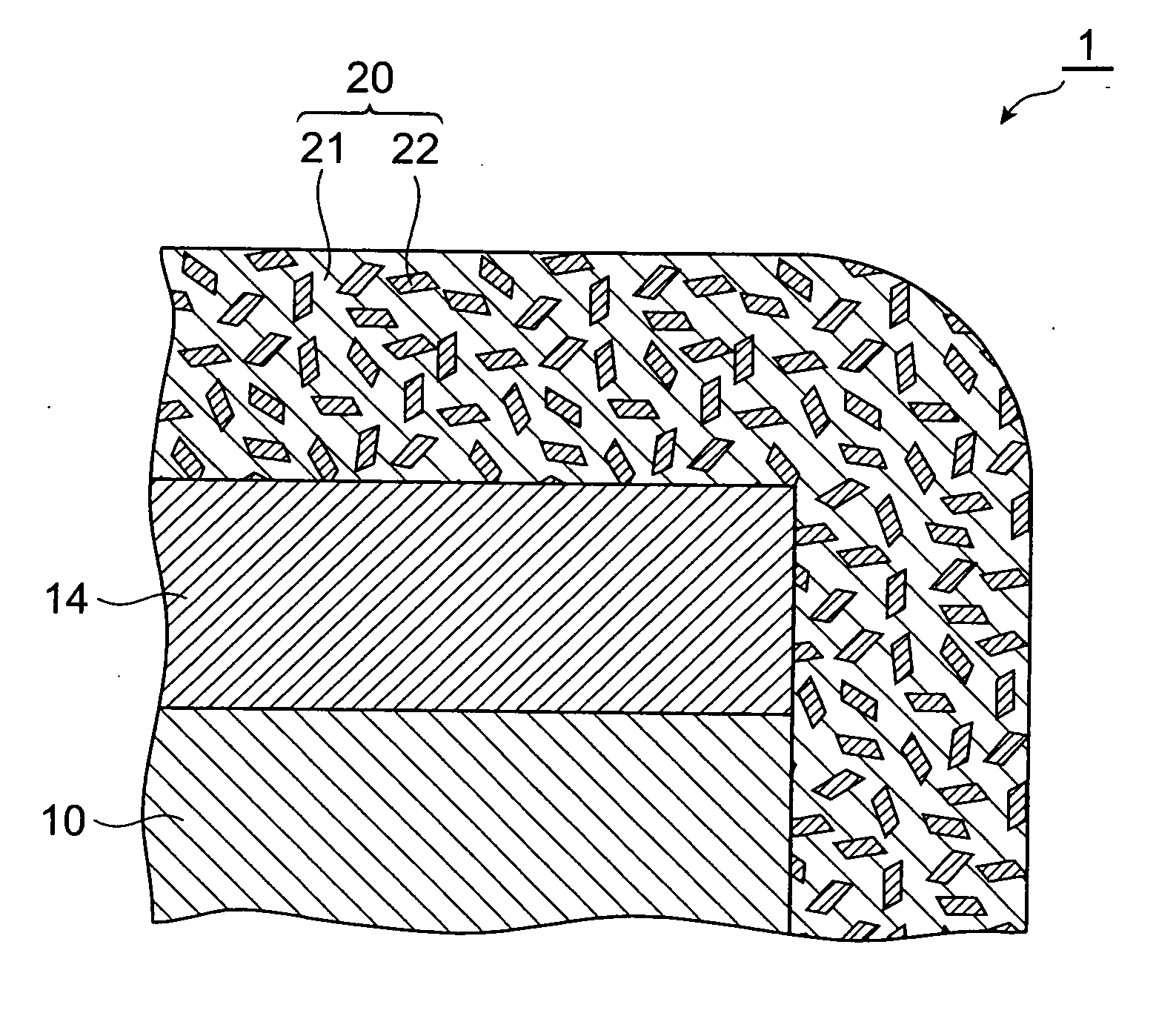PTC element
- Summary
- Abstract
- Description
- Claims
- Application Information
AI Technical Summary
Benefits of technology
Problems solved by technology
Method used
Image
Examples
example 1
[0057] Filamentous Ni particles were added to low-density polyethylene as the polymer matrix (mp: 122° C., density: 0.92 g / cm3) in an amount for 35 vol % with respect to the total volume of the polymer matrix and Ni particles, and kneading was performed for 30 minutes in a Laboplastomil while heating to 150° C. to obtain a kneaded blend having Ni particles dispersed therein. The obtained kneaded blend was molded into a sheet with a thickness of 0.8 mm using a hot press at 150° C., and cut out to a size of 3×4 mm to obtain a thermistor element body (PTC element body).
[0058] Next, the PTC element body was sandwiched between two Ni foils each roughened on one side and the sandwiched laminate was subjected to heating and pressurization with a hot press to anchor the Ni foils as electrodes to the PTC element body. The thermistor element body was then exposed to irradiation for crosslinking of the low-density polyethylene.
[0059] An epoxy resin composition containing an epoxy resin and t...
example 2
[0060] To 100 parts by weight of a mixture prepared by adding the thiol-based curing agent pentaerythritol tetrathioglycolate in an equivalent amount to a mixture of 50 parts by weight of a bisphenol A-type epoxy resin (“850” by Dainippon Ink & Chemicals, Inc.) and 50 parts by weight of a bisphenol F-type epoxy resin (“830” by Dainippon Ink & Chemicals, Inc.), there were added 10 parts by weight of an imidazole adduct (“PN-23J” by Ajinomoto Fine-Techno) and 10 parts by weight of silica, and a roll was used for dispersion to prepare an epoxy resin composition. The obtained epoxy resin composition was coated to a thickness of about 20 μm by dipping so as to cover all of the exposed surface of the thermistor element body as well as portions of the Ni foil surfaces, in the same manner as Example 1. The coated epoxy resin composition was heated at 80° C. for 60 minutes to form a protective layer composed of the cured epoxy resin composition (Tg: 55° C.). A PTC element was fabricated in t...
example 3
[0063] Filamentous Ni particles were added to low-density polyethylene as the polymer matrix (mp: 122° C., density: 0.92 g / cm3) in an amount for 35 vol % with respect to the total volume of the polymer matrix and Ni particles, and kneading was performed for 30 minutes in a Laboplastomil while heating to 150° C. to obtain a kneaded blend having Ni particles dispersed therein. The obtained kneaded blend was molded into a sheet with a thickness of 0.8 mm using a hot press at 150° C., and cut out to a size of 3×4 mm to obtain a PTC element body.
[0064] The PTC element body was then sandwiched between two Ni foils each roughened on one side and the sandwiched laminate was subjected to heating and pressurization with a hot press to anchor the Ni foils as electrodes to the PTC element body. Next, the PTC element body was exposed to irradiation for crosslinking of the low-density polyethylene.
[0065] An epoxy resin composition containing an epoxy resin and thiol-based curing agent was then ...
PUM
 Login to View More
Login to View More Abstract
Description
Claims
Application Information
 Login to View More
Login to View More - R&D
- Intellectual Property
- Life Sciences
- Materials
- Tech Scout
- Unparalleled Data Quality
- Higher Quality Content
- 60% Fewer Hallucinations
Browse by: Latest US Patents, China's latest patents, Technical Efficacy Thesaurus, Application Domain, Technology Topic, Popular Technical Reports.
© 2025 PatSnap. All rights reserved.Legal|Privacy policy|Modern Slavery Act Transparency Statement|Sitemap|About US| Contact US: help@patsnap.com



